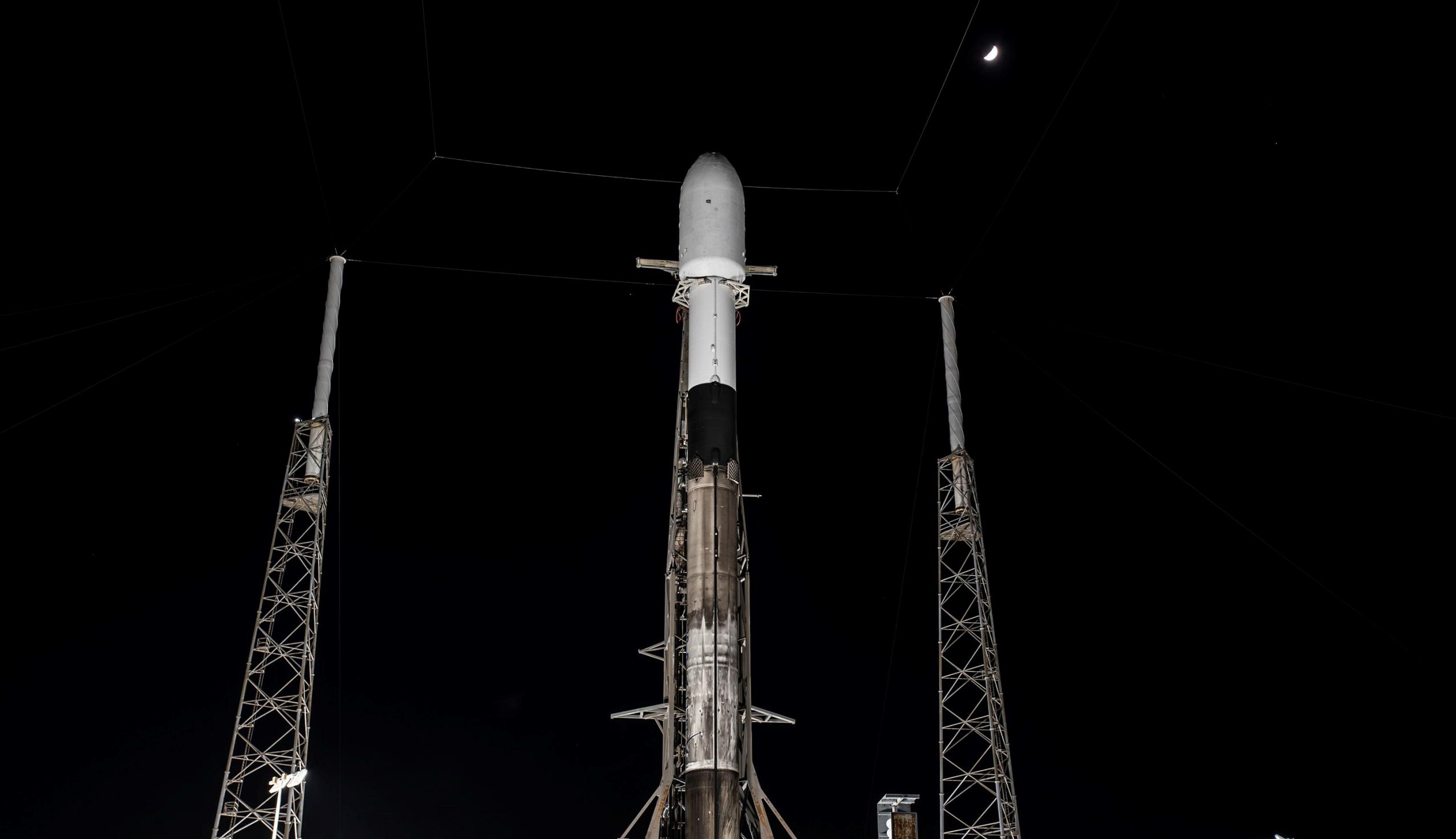
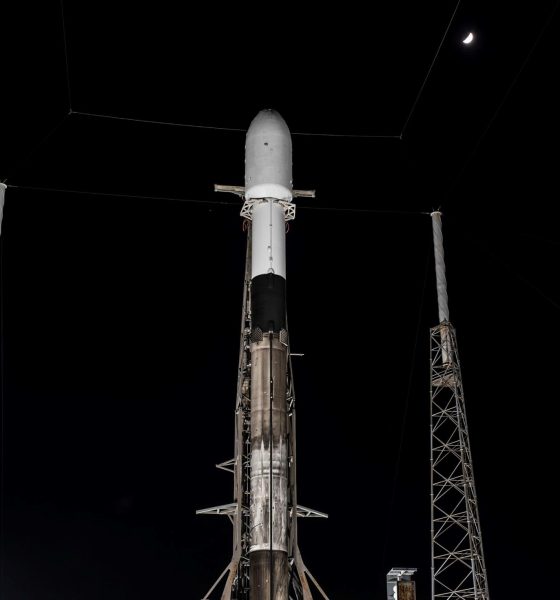
News
SpaceX’s Japanese Moon lander launch back on the calendar after indefinite delay
Update: After indefinitely delaying ispace’s first Moon lander launch on November 30th to fix unspecified issues with its Falcon 9 rocket, multiple sources indicate that SpaceX has put the mission back on its calendar.
Barring additional issues, the private HAKUTO-R Moon lander is now scheduled to lift off from SpaceX’s Cape Canaveral Space Force Station (CCSFS) LC-40 pad no earlier than (NET) 3:04 am EST (08:04 UTC) on Wednesday, December 7th. The mission’s quick return after just a few days of rework is a good sign that the issue that forced SpaceX to stand down was relatively minor. Simultaneously, SpaceX is moving ahead with plans to launch its first mission for OneWeb – a low Earth orbit satellite Internet provider competing directly with Starlink – less than ten hours prior, at 5:37 pm EST (22:37 UTC) on December 6th.
SpaceX support ship Doug departed Florida’s Port Canaveral on the afternoon of December 4th, likely en route to recover Falcon 9’s payload fairing after its first OneWeb launch. If SpaceX is, in fact, working towards a December 7th launch of HAKUTO-R, twin support ship Bob will likely also head to sea within the next 24 hours.
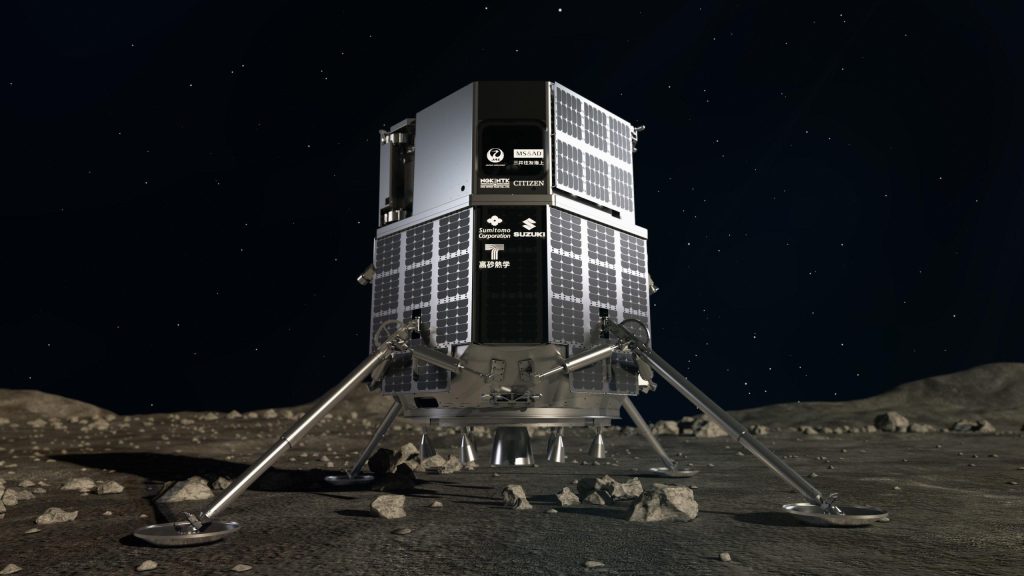
SpaceX has delayed the launch of Japanese startup ispace’s first Moon lander, HAKUTO-R, from Wednesday to Thursday, December 1st “to allow for additional pre-flight checkouts.”
The mission will be the third Moon launch from US soil in less than four months after SpaceX’s successful launch of the South Korean Pathfinder Lunar Orbiter (KPLO) in August and the debut of NASA’s Space Launch System (SLS) rocket earlier this month. Perhaps more importantly, ispace has the opportunity to become the first company in history to successfully land a privately-developed spacecraft on the Moon, a milestone that would arguably mark the start of a new era of lunar exploration.
The update that's rolling out to the fleet makes full use of the front and rear steering travel to minimize turning circle. In this case a reduction of 1.6 feet just over the air— Wes (@wmorrill3) April 16, 2024
ispace’s first HAKUTO-R Moon lander is expected to weigh approximately 1050 kilograms (~2300 lb) at liftoff and is designed to land up to 30 kilograms (~66 lb) of cargo on the lunar surface. The lander is made by several commercial partners: ispace has provided most of its design and structures, but Europe’s ArianeGroup supplied all of HAKUTO-R’s engines, plumbing, and propulsion hardware and was responsible for most of the final assembly process.
Because of ArianeGroup’s involvement, it’s likely that HAKUTO-R shares direct heritage with the European Service Module currently powering NASA’s Orion spacecraft on its first mission to the Moon. It also arguably makes the mission more of a collaboration between Europe and Japan than an exclusively Japanese mission, though HAKUTO-R will still technically be Japan’s first private mission to the Moon.
If successful, it could also become the first privately-funded Moon landing in history. But HAKUTO-R can’t claim to be the first private Moon landing attempt, a title held by Israeli company SpaceIL’s ill-fated Beresheet Moon lander. Launched by SpaceX as a rideshare passenger sitting on top of an Indonesian communications satellite, Beresheet propelled itself all the way from geostationary transfer orbit to lunar orbit over the course of about six weeks. Just a minute or so before touchdown, a manual command inadvertently shut down the spacecraft’s propulsion, causing it to impact the surface of the Moon at ~500 kilometers per hour (310 mph) – less than 8% away from a soft landing.
In September 2019, just five months later, India’s first nationally developed Moon lander got even closer to a successful landing, losing control at a velocity of just 210 km/h (~130 mph) and an altitude of 330 meters (1080 ft). Since the Soviet Union’s 1976 Luna-26 mission, only China’s national space agency (CNSA) has successfully landed on the Moon, completing three landings between 2013 and 2020. The last successful Western Moon landing (Apollo 17; also the last crewed Moon landing) occurred in 1972.
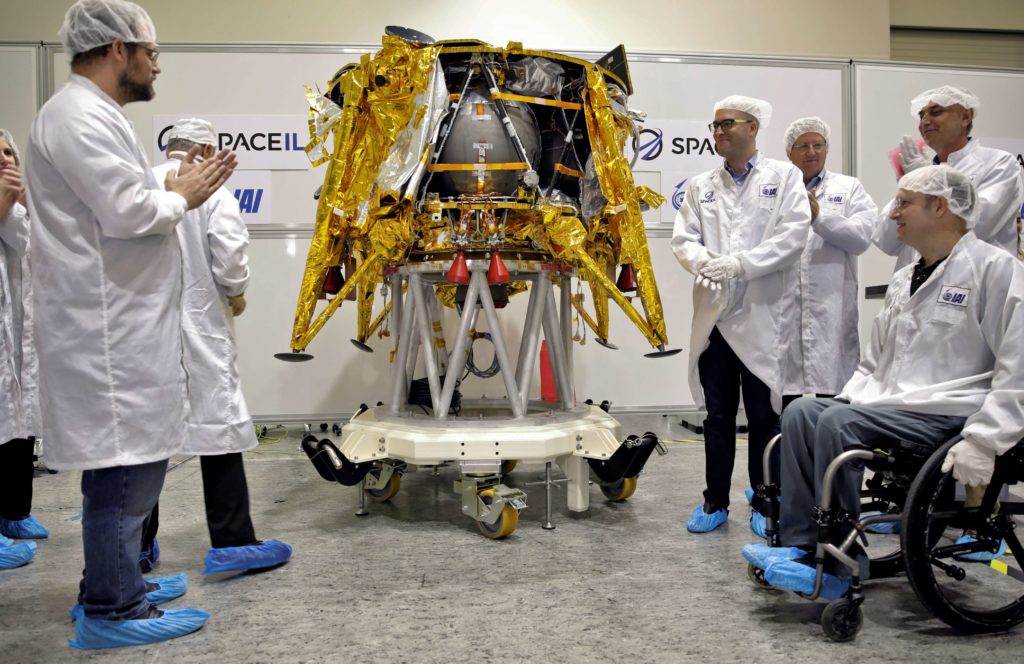
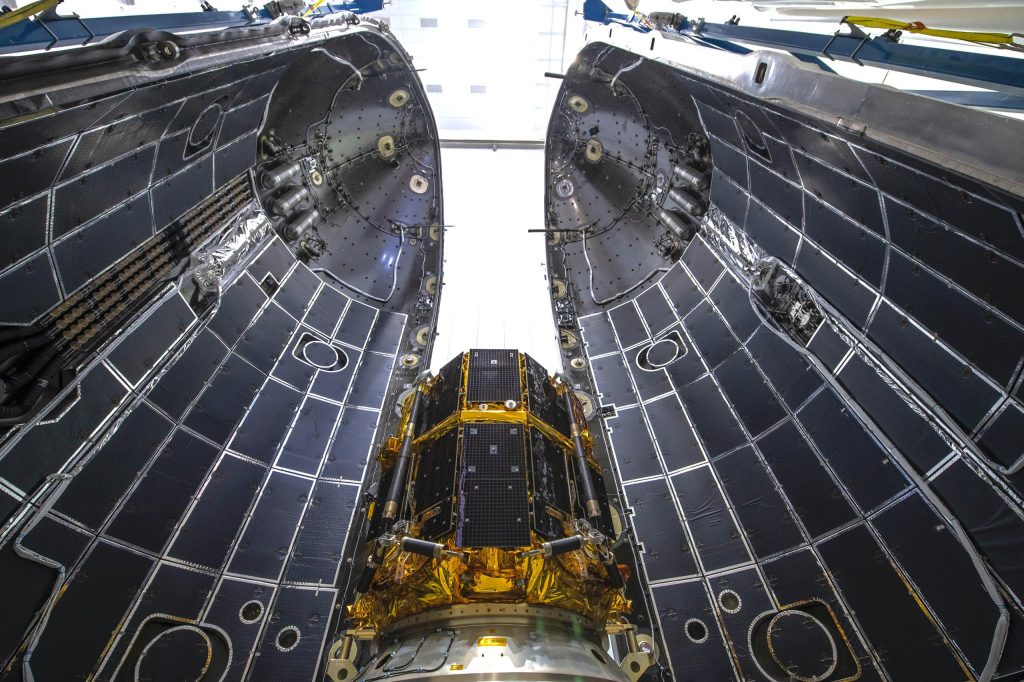
ispace’s ultimate goal is to help facilitate the creation of infrastructure capable of supporting a permanent population of 1000 people on the Moon by 2040. The Japanese startup has privately raised $210 million since it was founded in 2010. In 2022, it won a $73M NASA contract to develop a much larger SERIES-2 vehicle capable of sending either “500 kilograms to the [lunar] surface or as much as 2000 kilograms to lunar orbit.” SERIES-2 will be developed out of ispace’s US branch instead of its Japanese headquarters.
HAKUTO-R will carry seven payloads:
- A solid-state battery for ispace corporate partner NGK SPARK PLUG CO
- A Moon rover (Rashid) for the United Arab Emirates space agency
- JAXA’s transformable lunar robot
- A Canadian Space Agency flight computer prototype
- A camera system built by Canda’s Canadensys
- A panel engraved with the names of HAKUTO’s crowdfunding supporters
- A music disc containing Japanese rock band Sakanaction’s song “SORATO”
In addition to HAKUTO-R, SpaceX’s Falcon 9 rocket will simultaneously launch the NASA Jet Propulsion Laboratory’s (JPL) Lunar Flashflight ice surveyor as a rideshare payload. After launch, Lunar Flashlight will attempt to enter an elliptical lunar orbit and use an infrared laser to (invisibly) illuminate the surface of craters that have been in shadow for millions of years. The way the surface reflects that laser light will allow the spacecraft to prospect for water ice deposits that could one day be mined and converted into rocket propellant.
Tune in below around 3:20 am EST (08:25 UTC) on Thursday, December 1st to watch SpaceX launch Japan’s first privately-developed Moon lander.

News
Tesla FSD fleet is nearing 7 billion total miles, including 2.5 billion city miles
As can be seen on Tesla’s official FSD webpage, vehicles equipped with the system have now navigated over 6.99 billion miles.

Tesla’s Full Self-Driving (Supervised) fleet is closing in on almost 7 billion total miles driven, as per data posted by the company on its official FSD webpage.
These figures hint at the massive scale of data fueling Tesla’s rapid FSD improvements, which have been quite notable as of late.
FSD mileage milestones
As can be seen on Tesla’s official FSD webpage, vehicles equipped with the system have now navigated over 6.99 billion miles. Tesla owner and avid FSD tester Whole Mars Catalog also shared a screenshot indicating that from the nearly 7 billion miles traveled by the FSD fleet, more than 2.5 billion miles were driven inside cities.
City miles are particularly valuable for complex urban scenarios like unprotected turns, pedestrian interactions, and traffic lights. This is also the difference-maker for FSD, as only complex solutions, such as Waymo’s self-driving taxis, operate similarly on inner-city streets. And even then, incidents such as the San Francisco blackouts have proven challenging for sensor-rich vehicles like Waymos.
Tesla’s data edge
Tesla has a number of advantages in the autonomous vehicle sector, one of which is the size of its fleet and the number of vehicles training FSD on real-world roads. Tesla’s nearly 7 billion FSD miles then allow the company to roll out updates that make its vehicles behave like they are being driven by experienced drivers, even if they are operating on their own.
So notable are Tesla’s improvements to FSD that NVIDIA Director of Robotics Jim Fan, after experiencing FSD v14, noted that the system is the first AI that passes what he described as a “Physical Turing Test.”
“Despite knowing exactly how robot learning works, I still find it magical watching the steering wheel turn by itself. First it feels surreal, next it becomes routine. Then, like the smartphone, taking it away actively hurts. This is how humanity gets rewired and glued to god-like technologies,” Fan wrote in a post on X.
News
Tesla starts showing how FSD will change lives in Europe
Local officials tested the system on narrow country roads and were impressed by FSD’s smooth, human-like driving, with some calling the service a game-changer for everyday life in areas that are far from urban centers.

Tesla has launched Europe’s first public shuttle service using Full Self-Driving (Supervised) in the rural Eifelkreis Bitburg-Prüm region of Germany, demonstrating how the technology can restore independence and mobility for people who struggle with limited transport options.
Local officials tested the system on narrow country roads and were impressed by FSD’s smooth, human-like driving, with some calling the service a game-changer for everyday life in areas that are far from urban centers.
Officials see real impact on rural residents
Arzfeld Mayor Johannes Kuhl and District Administrator Andreas Kruppert personally tested the Tesla shuttle service. This allowed them to see just how well FSD navigated winding lanes and rural roads confidently. Kruppert said, “Autonomous driving sounds like science fiction to many, but we simply see here that it works totally well in rural regions too.” Kuhl, for his part, also noted that FSD “feels like a very experienced driver.”
The pilot complements the area’s “Citizen Bus” program, which provides on-demand rides for elderly residents who can no longer drive themselves. Tesla Europe shared a video of a demonstration of the service, highlighting how FSD gives people their freedom back, even in places where public transport is not as prevalent.
What the Ministry for Economic Affairs and Transport says
Rhineland-Palatinate’s Minister Daniela Schmitt supported the project, praising the collaboration that made this “first of its kind in Europe” possible. As per the ministry, the rural rollout for the service shows FSD’s potential beyond major cities, and it delivers tangible benefits like grocery runs, doctor visits, and social connections for isolated residents.
“Reliable and flexible mobility is especially vital in rural areas. With the launch of a shuttle service using self-driving vehicles (FSD supervised) by Tesla in the Eifelkreis Bitburg-Prüm, an innovative pilot project is now getting underway that complements local community bus services. It is the first project of its kind in Europe.
“The result is a real gain for rural mobility: greater accessibility, more flexibility and tangible benefits for everyday life. A strong signal for innovation, cooperation and future-oriented mobility beyond urban centers,” the ministry wrote in a LinkedIn post.
News
Tesla China quietly posts Robotaxi-related job listing
Tesla China is currently seeking a Low Voltage Electrical Engineer to work on circuit board design for the company’s autonomous vehicles.

Tesla has posted a new job listing in Shanghai explicitly tied to its Robotaxi program, fueling speculation that the company is preparing to launch its dedicated autonomous ride-hailing service in China.
As noted in the listing, Tesla China is currently seeking a Low Voltage Electrical Engineer to work on circuit board design for the company’s autonomous vehicles.
Robotaxi-specific role
The listing, which was shared on social media platform X by industry watcher @tslaming, suggested that Tesla China is looking to fill the role urgently. The job listing itself specifically mentions that the person hired for the role will be working on the Low Voltage Hardware team, which would design the circuit boards that would serve as the nervous system of the Robotaxi.
Key tasks for the role, as indicated in the job listing, include collaboration with PCB layout, firmware, mechanical, program management, and validation teams, among other responsibilities. The role is based in Shanghai.
China Robotaxi launch
China represents a massive potential market for robotaxis, with its dense urban centers and supportive policies in select cities. Tesla has limited permission to roll out FSD in the country, though despite this, its vehicles have been hailed as among the best in the market when it comes to autonomous features. So far, at least, it appears that China supports Tesla’s FSD and Robotaxi rollout.
This was hinted at in November, when Tesla brought the Cybercab to the 8th China International Import Expo (CIIE) in Shanghai, marking the first time that the autonomous two-seater was brought to the Asia-Pacific region. The vehicle, despite not having a release date in China, received a significant amount of interest among the event’s attendees.








